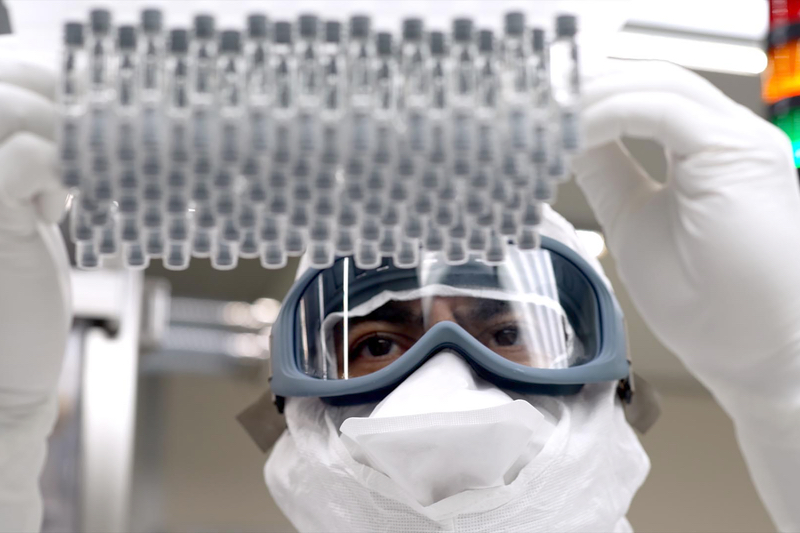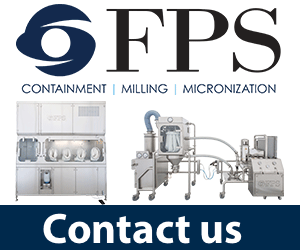There is no one-size-fits-all when it comes to drug production. Every formulation will have nuances to it that are unique and need to be understood for a successful end product.
That said, experience with a variety of formulations and practices can help with creating the most efficient and reliable process.
This is where contract manufacturers add value. Contract Development and Manufacturing Organizations (CDMOs) provide a service used by many pharmaceutical companies to outsource process development and production.
There is no one-size-fits-all when it comes to drug production
CDMOs have a standing resource bank of expertise and real estate that can make the process of setting up manufacturing in a certified facility far easier and less expensive.
Experts like Lifecore Biomedical’s Mohannad Kadhum are in charge of the technology transfer from the pharmaceutical customer to the CDMO facility.
The Principal Process Engineer for injectables expert at Lifecore spoke with Cleanroom Technology about his role within the company and how cleanliness standards needed for these environments play into it.
Flexibility is key to a CDMO
As an experienced process development and manufacturing partner for a variety of clients with varying requirements, Lifecore has multiple facilities with a variety of controlled environments.
The cleanrooms in these facilities vary from the standard ISO Class 8 (Grade D) cleanrooms for secondary packing, up to the ISO Class 5 (Grade A) cleanroom filling suits.
These cleanrooms were built with flexibility in mind, as Kadhum explains, “We don’t normally design or modify cleanrooms for new products as our current setup involving mobile equipment skids makes the space we have flexible to use with the types of products we develop and manufacture.”
He explains that the team worked with architects and construction contractors who are experts in cleanroom design, plus the team’s own institutional knowledge to include a variety of controls within designs. “These include appropriate air handling, cleanability of surfaces, non-shedding materials, and crevice-free design,” he explains.
Kadhum explains that the cleanrooms are routinely certified
Kadhum adds that when he works on new products, the process development teams collaborate with a number of in-house groups such as engineering, sterility assurance, QC, and manufacturing to ensure that sterility is ensured throughout each step of a process.
Kadhum explains that the cleanrooms are routinely certified and, once qualified, cleanliness and sterility are ensured through aseptic processes and monitoring activities. “We have a robust environmental monitoring programme that verifies sterility and a closed-circuit camera system that aids in event investigation,” he says.
There are multiple oversight programmes to make sure that these procedures stay up to date and create a safe end-product for the customer. Additionally, we have a Supervisory Control and Data Acquisition (SCADA) system that automatically monitors key components of our infrastructure such as particulate monitoring. All of these systems work together to avoid issues within the cleanroom environments.
Technology transfer
“Tech transfer” is Kadhum’s bread and butter. “I’ve led multiple projects and have supported numerous others covering a wide range of injectable medical device and drug products.” He explains that this includes converting customer processes to a phase-appropriate cGMP process by designing and ordering equipment, producing clinical trial materials, and validating the process in accordance with regulatory guidance.
“Tech transfer” is Kadhum’s bread and butter
“There are various stages depending upon the phase of a customer’s programme as well as the services which Lifecore will provide,” Kadhum says. “Many times, a project is initiated with a tech transfer batch, which is a small batch made at lab scale. Then, we design a GMP process and produce clinical-stage material for Phase I-III clinical trials.”
He adds that beyond this point, there are numerous other activities to validate a process and ensure its readiness for regular production of a commercial product.
How does highly viscous change things?
One of Lifecore’s particular areas of expertise is high-viscosity formulations, and the PhD’s background in chemical engineering is a great help with this.
Highly viscous formulations present significant challenges to sterilisation, and Kadhum has encountered these challenges frequently.
“For a number of [the projects I’ve worked on], I’ve had the opportunity to do in-depth studies and implement improvements to our proprietary technology for performing aseptic processing of high-viscous formulations in excess of 300,000 centipoise (a unit of viscosity),” he says.
One of Lifecore’s particular areas of expertise is high-viscosity formulations
“Commonly used sterile filtration solutions provided by vendors have limitations when dealing with viscosities upward of a few thousand centipoise,” Kadhum explains.
“Because of this, some manufacturers resort to terminal sterilisation, which can alter product quality and complicate process design,” Kadhum continued.
These terminal sterilisation techniques often include E-Beam, gamma radiation, dry heat, and autoclaves, to name a few. But as Kadhum states, these can have undesirable side effects. Kadhum further explains that the sterile filtration technology that he utilislifecore-biomedical-mohannad-kadhumes for these difficult formulations prior to filling, means he can avoid the need for terminal sterilisation.
In 2022, Kadhum co-authored a paper with colleagues on this exact topic (Mohannad Kadhum, Jack Kochevar, Ben Koch, Ryan Swanson, and Steve Laninga, 2022).
This paper demonstrated the suitability and benefits of HPSF in an expanded array of formulations
The investigation looked at high-pressure sterile filtration (HPSF) as a method to increase yield without compromising safety or quality.
It was looking to overcome the inherent difficulty in filtration of relatively high molecular weight polymers or highly concentrated biologics.
As a manufacturer of sodium hyaluronate which is a highly viscous substance, Lifecore developed and improved upon this unique filtration process over the course of decades. This paper demonstrated the suitability and benefits of HPSF in an expanded array of formulations. The technique resulted in higher throughput, higher flux, and reproducibility in terms of concentration, as well as lower material holdup. With the technology, Lifecore continues to serve customers with complex formulations that may prove challenging to others in the industry.
PhD research
This paper was not Kadhum’s first academic publication; he has been publishing consistently over the years on the various chemical engineering topics relevant to his work at the time.
“As a part of my PhD education, I had the opportunity to work with bright individuals on a wide range of technical topics,” he explains “These collaborations usually culminate in a paper or a conference presentation.” This laid a fantastic foundation for the continuation of Kadham’s career.
This diligence has resulted in dozens of publications over the last decade
“My colleagues and I attend seminars, conferences, and training regularly. I read as much as I can on topics related to my area and published literature in general, and I try to stay up-to-date with the latest technologies and bring those to our facility when possible,” he says.
This diligence has resulted in dozens of publications over the last decade, providing Kadhum the opportunity to showcase his scientific work while demonstrating unique challenges that Lifecore has overcome through novel approaches.
The future is clean and contained
Research is one way that manufacturers keep improving their processes, but Kadhum also wants to discuss state-of-the-art equipment that is used to keep the facility on top of the latest trends and industry standards.
With the publication of the new EU GMP Annex 1 for production of sterile medicinal products, the use of isolators is seen as a favoured technology.
“Overall, the industry is introducing new technologies that make manufacturing processes safer and products more secure,” Kadham explains.
“For instance, Lifecore Biomedical is currently beginning the process of installing the first of two Groninger isolator-based filling machines which will increase our current syringe, vial, and cartridge manufacturing capacity.”
Pushing the boundaries means not just discovering new technologies, but also finding new uses for the existing ones
The SKAN isolators on these machines ensure that there is no direct contact between operators and products, and as Kadham says, they offer a greater level of product protection.
“Disposable, sterile, single-use products are another trend that is being used increasingly,” Kadhum says. “These products are utilised along the entire process development and manufacturing supply chain – from material handling and formulation to aseptic manufacturing of both clinical and commercial batches.”
Kadhum explains that Lifecore is already familiar with this trend and utilises intrinsic, sterile connectors, which allow an aseptic connection on single-use systems to be made in a reduced cleanroom environment (outside of a Grade A).

Kadhum’s expertise and that of other Process Engineers are an invaluable asset to CDMOs.
Pushing the boundaries means not just discovering new technologies, but also finding new uses for the existing ones.
The University of Oklahoma and Nahrain University both set Kadhum up to succeed in the rigorous pharmaceutical world, as well as his Chemistry, Manufacturing and Controls CMC certification from The Centre for Professional Innovation and Education.
Following this extensive chemical engineering training, Kadhum spent time as a Senior Scientist for Bioindustrial Applications at a large food and beverage manufacturer, working on biopolymers for a wide range of applications.
This shows that the route to pharmaceutical prowess is not a single road but many, coming together to make a comprehensive resource of expertise that covers any and everything.




